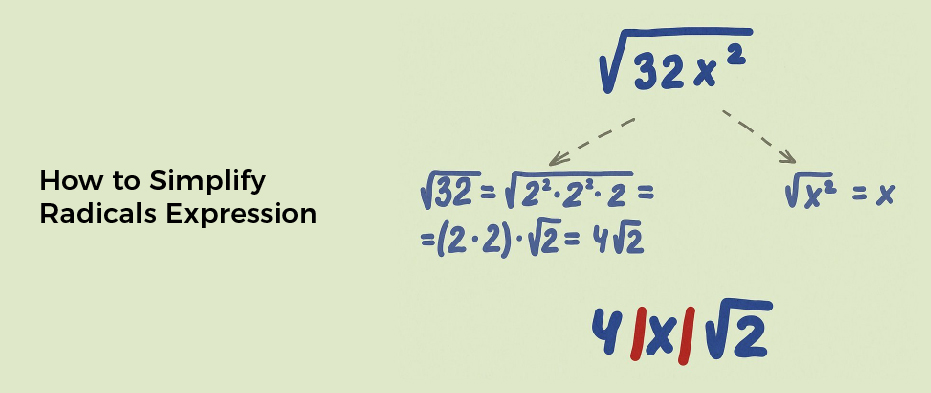
How to Simplify Radicals Expression
Table of Contents
How to simplify radicals:Balancing chemical equations is a key part of chemistry. It allows us to predict the amount of product formed from given reactants accurately and helps us understand nature’s energy and mass conservation laws. Learning how to balance chemical equations can seem daunting at first, but it quickly becomes second nature with practice.
This article will explore the basics of balancing chemical equations and provide tips to help you practice and understand the process. We will also discuss simplifying cube roots and higher roots to balance complex equations more easily. By the end, you should understand how to balance any type of chemical equation.
1. Multiplying the expression by sqrt (2)/sqrt (2)
If you have a radical expression, you may want to simplify it. The process involves breaking it down and applying the rules of integer operations. These rules can be applied to radicals and fractions.
Simplifying a radical expression involves removing any radicals that are not needed. The process can be accomplished through adding, subtracting, multiplying, and dividing. All these methods apply the rules of integer operations to simplify radicals.
Simplifying a radical expression also requires finding like terms. This is done by identifying the root and index of the radical. If you have two or more similar radicals in both the root and index, they can be added together. For example, if you have -3x and -x, you can add them to produce a zero.
2. Simplifying Cube Roots and Higher Roots
For cube roots (or higher roots), it’s often useful to find out if a factor of the radicand (the number inside the root sign) can be taken out as a perfect cube. If so, then the radicals expression is simplified by factoring it into two smaller radicals expressions and taking out a common factor.
3. Simplify Radicals Using the “conjugate.”
If you’ve encountered a math equation with a radical in the denominator, you might have been wondering how to simplify the radical expression. The conjugate method can help you do this.
The conjugate is a mathematical symbol that indicates the multiplication of the top and bottom by the denominator. This can be useful when solving equations with complex numbers. It also provides an easy way to remove square roots from a fraction function. Using the conjugate method is a great way to solve limit problems.
There are many different rules for rationalizing a radical expression. A rule that you might be familiar with is the Product Raised to a Power Rule. A general rule says that the product of two or more numbers raised to a power is equal to the product of each number raised to that same power.
4. Using The Square Root of a Product Rule
If you are working on a radical expression, you will need to know how to simplify it using the square root of a product rule. This rule is used when multiplying and simplifying radicals and can be used to simplify complex expressions.
The basic idea is to find the perfect square factor of the radicand. Once you have found that, you can simplify the radical expression. Then, you can combine the radicals. If the radicand has smaller perfect square factors, you can further simplify them.
In this case, the radicand is “64”, and the index is the small number 3 that you see in the radical symbol. Then, you can read it as “root nine.” When combining radicals, you need to find an index that is the same as the radicand. If it is not, you can either add a radicand to the expression or break it down into similar terms.
5. Simplify Radicals Using Fractions inside Roots
One of the simplest methods for simplifying a radical’s expression is to simplify any fractions that are inside the root. To do this, divide both the numerator and denominator by a common factor until there isn’t any left.
6. Combining Roots of Different Kinds
It’s possible to combine radicals of different kinds into a single expression. To do this, check for any common factors between the two terms, and use that to factor out a perfect root from each radical. Then simply add or subtract the remaining parts of each radical as needed.
How to Balance Chemical Equations
Balancing chemical equations is the process of making sure that the same number of atoms is on both sides of an equation. This can be done by counting the number of atoms on each side, changing coefficients in the equation to make them equal, and using math to determine the values. With practice, it’s possible to become proficient in balancing chemical equations.